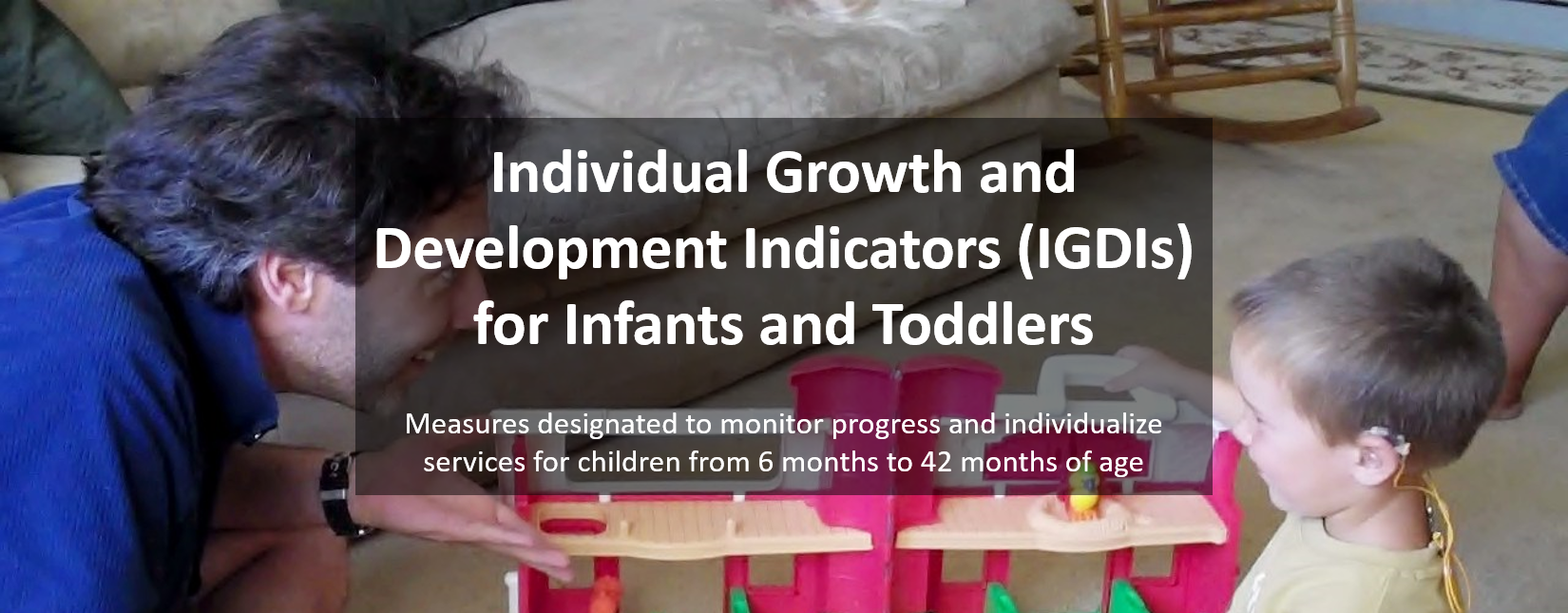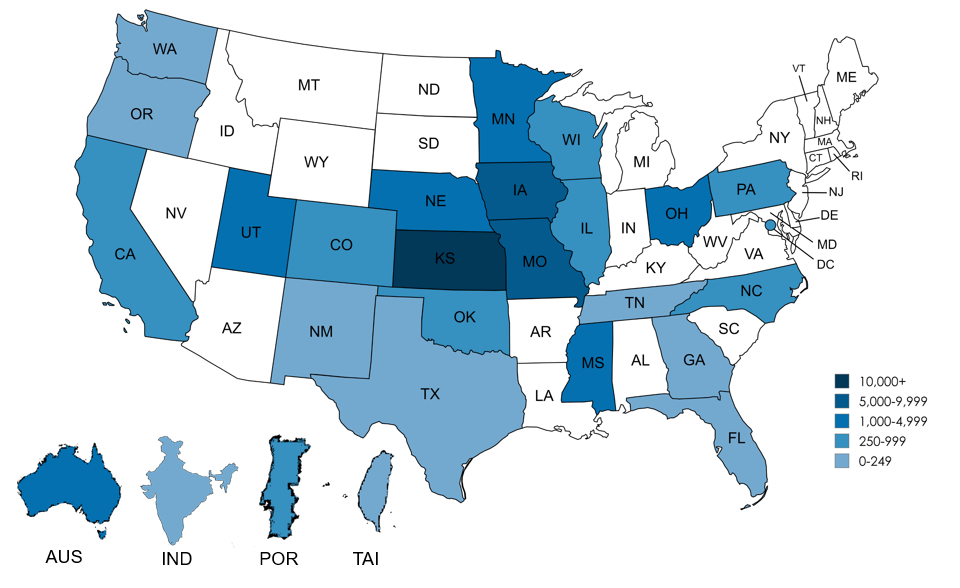
Why use IGDIs?
- Assess child outcomes using 6-minute, standardized, play-based assessments for children age 6 to 42 months
- Get a quick ‘snapshot’ of a child’s progress on key outcomes
- Make data-based decisions about intervention and services
- Share child progress with parents and other providers
- Provide reports to stakeholders about program impact
- For more information see our Frequently Asked Questions (FAQs)
What’s New with IGDIs?
We have started an IGDI scoring service to eliminate the need to train coders and reduce the burden on your staff to code assessments. All your staff need is an Android or iPhone device to record the assessment, submit it to us, and they will receive an email with a link to the child’s updated chart when it’s been coded. Contact us if you would like more information.
Where and how are IGDIs Used?
IGDIs have been used throughout the U.S. in Early Head Start, Part C, and community-based infant-toddler programs throughout the U.S. and Australia and Portugal. Nearly 125,000 assessments have been entered into our data system for over 35,000 children by certified assessors in states indicated in the map. Administrators use IGDI data to satisfy state requirements for monitoring child outcomes, service providers use it to identify children at-risk for delay and to inform intervention decisions, and parents use it to track their child’s growth in language, movement, problem solving, and social engagement like they do with height and weight charts.

